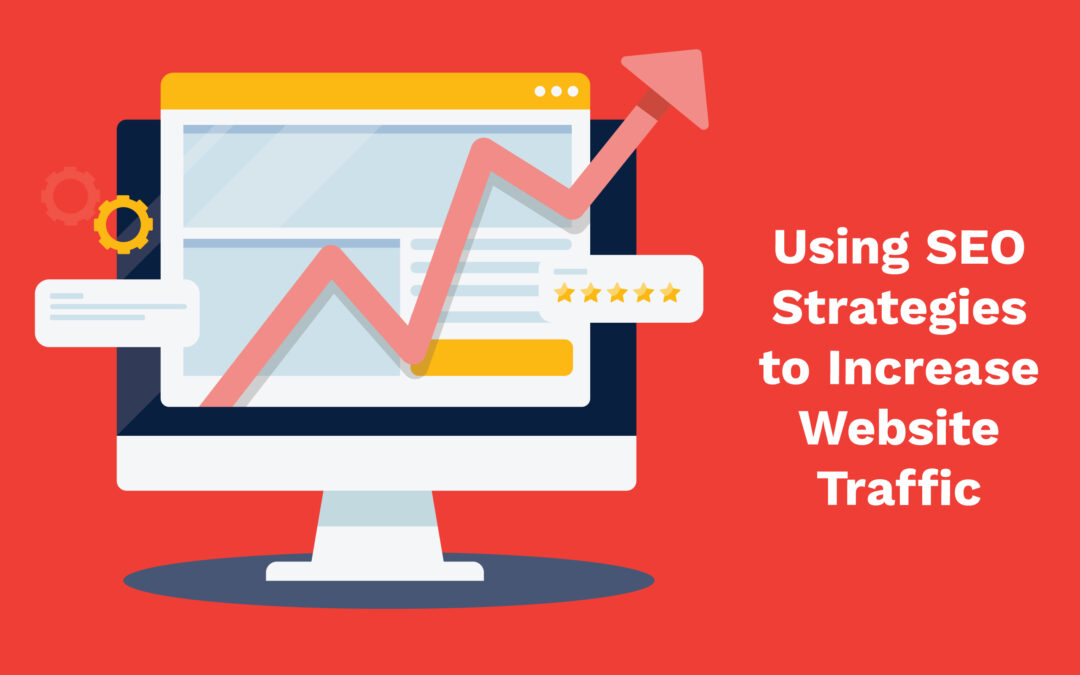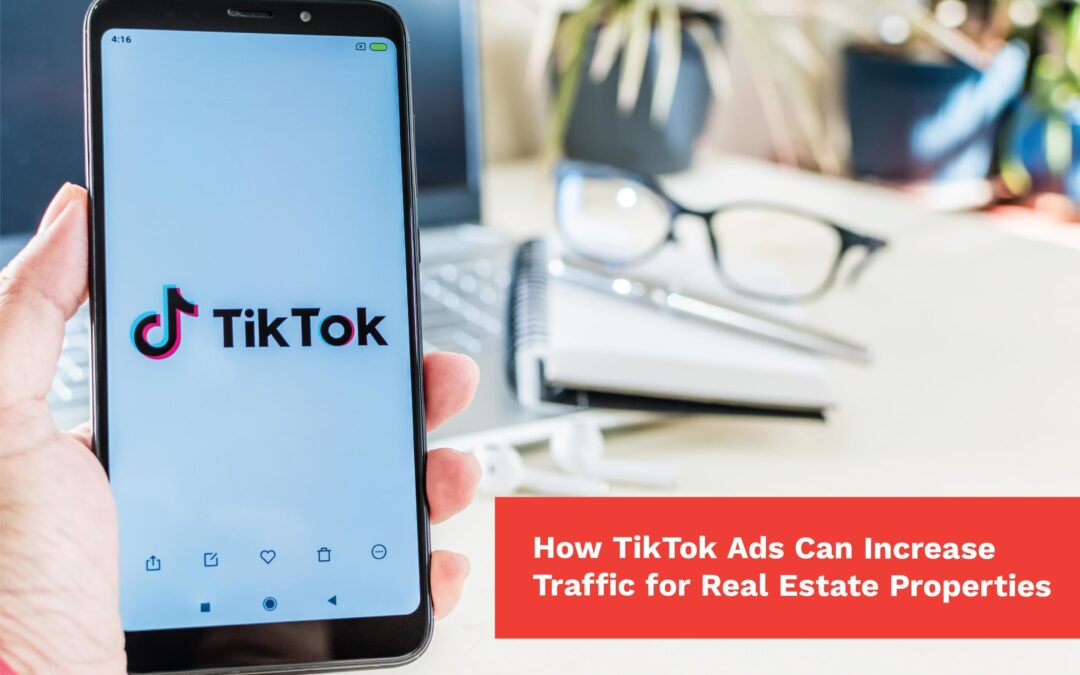
by threshold | Feb 17, 2023 | General
 Alex Pullen
Alex Pullen
What is Cyber Security?
As more companies rely on computers, the internet, and cloud-based technology for everyday business services, more and more threats to these systems emerge. Cyber security is the body of policies, processes, and technologies designed to protect networks, devices, programs, and your data from attack, damage, or unauthorized access.
Why is Cyber Security Important?
Security may not seem that important at first glance, but depending on the industry you are in, it may have major consequences if your network or systems are breached. Generally, the government, military, corporate, financial, and medical organizations hold data that malicious actors would like for themselves, or to sell to others on the “dark web.” In the last year though, traditional targets are expanded upon as society is now being affected by mass misinformation campaigns, ransomware attacks, and botnets.
Information bad actors look for can include:
- Embarrassing information that could damage the company’s reputation
- Digital services you and your company use
- Emails, passwords, account names, phone numbers
- Donor information, client lists, board information
- Financial corporate data
- Proprietary information
- Access to your hardware to do criminal activities or to mine bitcoin on your systems
- Personally Identifiable Information (PII)
- Credit cards, bank account info, addresses – fraud and identity theft
- Medical records, SSN, insurance information, etc.
What is Ransomware?
A malicious actor may not be satisfied with just entering, and stealing information from your company’s network or your private network. Ransomware is encryption software a malicious hacker uses to encrypt your files, and they keep the decryption key. Once all of the files on your computer are locked, you are notified that you must pay a fee usually in bitcoin, to have your hard drive unlocked/decrypted. Ransoms in 2020 were measured in the $10s of millions of dollars as institutions were brought to their knees by these state-sponsored bad actors. Ransomware is increasingly being used across all sectors including the medical sector.
Learn more about how to prevent ransomware.
What Can I Do?
If you are looking for some tips to get you started check out the notes below.
Proper Hardware & Network Configuration:
Before we can secure a system, we need to know the components of that system. The foundation of network security is knowing and maintaining an inventory of all the hardware that is on your network. This includes the endpoints (desktop computers, laptops, mobile phones, sensors, cameras switches routers, databases) that are on your network.
Quick Network Security Tips:
- Inventory everything in your network
- Keep all operating systems up to date and all software and services up to date
- Implement Network Access (NAC) controls to keep unauthorized devices off the network
- Implement an Intrusion Detection System (IDS) to alert you of suspicious activity
- Maintain an antivirus/malware scanner
- Subscribe to newsletters for the services you use (they will let you know about vulnerabilities)
Password Management:
Password management is an essential part of developing a more advanced security posture. With current computer technology, a six-character password can be “brute forced” in a matter of minutes or seconds. Requiring passwords that are 12-16 characters long and that use special characters and upper and lower case can increases the time needed to crack these passwords to ~250 years.
So, requiring your customers, staff, and faculty to have strong passwords significantly hardens the attack surface malicious users have access to.
Strong Password Tips:
Try to think of a “passphrase” to make your password longer and easy to remember
- Ex. Wat3rMakesmeh@ppy
- Ex. MountainsoverR!vers
Ex. Fun/<ySnowd@nce
- Don’t like remembering long passwords? Use LastPass, the industry standard for password management. Check them out here: https://www.lastpass.com/
- Rotate your passwords every 90 days or annually, or if you suspect compromise.
- Enable Multi-Factor Authentication (MFA)
- Use the “have I been pwned” service to see if your email and password information was breached in the past: https://haveibeenpwned.com/
- If your information is on the haveibeenpwned.com site, be sure to update all associated information with those accounts or other accounts with the same passwords.
Tips for Securing Your Home Office
Just because you are working from home does not make your data safer. In 2020 there was a major spike in Phishing scams averaging 1,185 phishing attacks per month per organization. Malicious actors are capitalizing on the global pandemic crisis to get people to give up personal information online or click a link that downloads malware to your computer.
Due to the fact that people are working and studying from home and using new services, companies may have less control over the hardware that you use and it may not be maintained as consistently. This environment is ripe with opportunities for malicious actors to steal your personal information, identity, and possibly ransom your data or allocate your hardware to a botnet used for criminal activity or mining bitcoin.
Watch Out for Phishing Scams: Phishing is the fraudulent attempt to obtain sensitive information or data, such as usernames, passwords, and credit card details, by disguising oneself as a trustworthy entity in an email, text, or phone call. Never click on links or attachments in emails that look suspicious and especially if you don’t know the sender.
Remove Unnecessary and Risky Applications: If you don’t need an application or service it should be removed. Also remember that your favorite free game, a free font, or a free service may also set up your computer or phone as part of a botnet and be mining bitcoin for someone else.
Antivirus and Malware: Antivirus and Malware scanners are a great tool for discovering if known malware, adware or viruses are on your systems. The limitation is that they don’t always catch “new” exploits or viruses that are released.
Enable Your Firewall: A firewall is a list of rules that allow or deny traffic through your network. Enabling your firewall will allow it to reject network information that could be malicious or seems strange.
Updates and Software Patches: Updating your host machine’s operating system and keeping all software up to date and patched is an important part of your home office cyber security posture. Updates fix bugs and vulnerabilities and retire old code so that your machine can run more efficiently and securely.
Keep Your Network Secure: Maintaining a strong password on your home network and changing it annually is a good start. If you have lots of guests using the network, you could set up a separate network for guests so they wouldn’t have access to any tools like cameras that would be connected to your network. Your network’s name or SSID can also be hidden.
Regularly Schedule Backups: Backups are an essential part of a home office. Ensure you have on-site or cloud-based backups and that you’ve tested them.
Switch off voice-controlled smart devices at your home workstation and cover the webcam when you’re not using it: Personal Privacy in the digital age is a huge issue and now more so with people working remotely from home. Cameras and microphones in smart devices can be attacked and your data could be stolen. Ie. Pictures of the inside of your home office and audio recordings in your home.
Public WIFI? Use a VPN: All the traffic that goes through the router at your favorite coffee shop is available for others to see. Before you log into your bank account, remember that, and make sure you are using a secure HTTPS connection and ideally using a Virtual Private Network (VPN) to both encrypt the data you’re sending and hide your physical location.
Log off and secure devices when not using them: Even if you’re only walking away for a second log off from your machine so that it is not accessible during your absence. And, when you are done working log out and put all of your devices and hard drives in a secure location. This is imperative not only from the malicious actor’s standpoint, but also, accidents happen… Water or a pet could damage your computer or hard drive.
Updates and Security Implications
We all see those pop-ups on our mac or windows operating system or mobile device telling us it’s time to update the software or operating system.
It may seem convenient to do it later, but the reality, by leaving your device or service out of date, your personally-identifying data are vulnerable to being sold and/or ransomed.
The sooner you update the more secure your data will be and your device. You will have more peace of mind and better functionality as well.
Note – PCI Compliance: Businesses that process transactions or personally identifiable information online are required to update and patch systems within one month of critical release.
What Do Software Updates Do?
There are plenty of benefits to updating your software. These include filling holes in the infrastructure for security reasons, updating functionality, and removing bugs. Since there are so many users now, big companies like Microsoft and Apple get lots of data on user feedback and experience so in general the software is getting better, more user-friendly, and more secure.
How Do Updates Help Patch Security Flaws?
Just like any criminal, a hacker is looking for flaws in your security system. Bad actors can take advantage of the “gaps” in your security and do many things. They can download malware or back doors into your systems allowing complete access and stealing the information, possibly selling it, or lock you out of your own system and ransoming the information back to you.
The community of software engineers and beneficial hackers helps find these errors in security in different applications and are reported and “patched” in the next update. In some cases, there can be major flaws not seen upon initial release, that are discovered in the wild, and then multiple critical patches can be pushed out in one subsequent update. If you haven’t updated in a year, there could be multiple critical known vulnerabilities on your system.
It’s also important to note that some software is so old it is no longer supported or deprecated. A good example of this is Windows 7. Windows 7 is a highly vulnerable operating system used in teaching the next generation of hackers how to hack. It should not be used in the business environment.
How Do Software Updates Protect My Data?
We all keep lots of important documents on our computers and mobile devices. We keep copies of things like our taxes, passports, all of our account login information, photographs, and videos. These documents hold important details about our lives.
It’s called Personally-Identifying Information, with this data, people commit identity theft and fraud. They can take out loans in your name, guess your security questions, and possibly ruin your credit, which can take years to fix.
Think of the Community
The internet is a community of devices that delicately interacts to perform all the tasks we ask of it. We ask it for information, products and media, and data constantly. By keeping our own software and operating systems up to date, we help ensure that we are not a means of transmission of malware and viruses.
Long Story Short
In summary, we recommend updating your systems after being notified of critical vulnerabilities, or quarterly, every 90 days. The longer you wait, the more vulnerable your systems are. Also, waiting too long may mean your software licenses have expired or, that other services you use may not be compatible with the updated software. So update often to avoid being hacked or having your system fall apart because it’s not supported any longer.

by threshold | Jan 24, 2023 | Digital Marketing, General, Marketing
 Ava Page
Ava Page
Rising averages in student housing occupancy
Year after year, fewer students are living at home and on campus during their college years, opting for off-campus student housing options instead. From pricing to safety to amenities, off-campus luxury student housing is becoming the new norm for many college students. Many student housing properties are seeing an uptick of 10-20% in leasing and pre-leasing compared to just last year.
Even if numbers this high happen to be a one-year anomaly, the fact is, student housing isn’t going anywhere. In fact, it’s only continuing to grow. Whether it be for safety reasons, amenity access, location convenience, pricing, or any number of factors to choose off-campus housing over dorm life, you don’t want to catch yourself falling behind on these marketing trends, or property management trends.
Manage growth expectations
As the demand grows for off-campus housing, so do the expectations for your property. As rent increases, so do the expectations of current and potential residents. See where we’re going with this?
2023 needs to be the year of self-reflection for your property; How can you enhance your amenities? What updates need to be made, both interior and exterior? What needs to be done to improve upon maintenance requests completion, satisfaction, and timeliness?
As you look toward reflection, rebranding, and renovation, your residents need to be at the forefront of your thought process, not only in what they’d like to see but what they’d like to receive. This is why image is just the first step when it comes to keeping up with the expectations of your off-campus housing property.
When looking to rebrand, or even just refresh your property, one of the most important—yet often forgotten—things to remember is to research your competitors. If you’re looking to be the property with the best value, best access, best amenities, etc., you need to be aware of what your competition is offering first, so you don’t join a long list of properties that offer the same talking points in today’s highly saturated markets.
Ensure quality services
Before you begin anything else, as you reflect on your property, you need to realistically understand your value, so you know what your most marketable assets are. When creating a marketing campaign, you must be able to ensure that ALL areas of your property are worth the value—not just the sparkling pool or hi-tech fitness center.
Analyze your maintenance reports, check on those areas that need repairing or updating, and make sure the parking is adequate for your current AND prospective residents—things like these are what is going to set you aside from a competitor with all of the same amenities or price points that you have to offer.
Quality will always rise over quantity when it comes to choosing a new home.
Effectively market rate increases
It’s no secret that rent payments have skyrocketed over the last few years following the rental boom that occurred during the height of COVID-19. While many rental payments are stabilizing toward what’s favorable in the market, people have really begun to see the potential that renting has to offer in different lifestyles—and that’s what you’re going to want your largest marketing point to be, moving forward.
Product type, quality, and proximity are going to be the key factors as you look toward not only improving your property to validate higher rental rates but being able to successfully apply marketing strategies to these higher rates as well. You need to be able to associate an experience with your property and its pricing, rather than just finishes.
Many new builds in off-campus housing have larger floor plan options with individual rent options, so a student looking to move in with friends has the same abilities as one looking to be assigned a roommate. Many properties say new supply leased up to 86% in 2022, which was up 6% YoY (year-over-year).
These numbers prove that as we move forward, there will continue to be a subset of students who will remain willing to pay the higher rates for higher quality, product type, and proximity ratings, as they know they will more than likely spend 2+ years living in these properties.
The success of AI leasing & marketing efforts
As we move into a time where AI has become more normalized than ever, it’s relevant to address whether or not it’s a useful tool in your leasing and marketing efforts, or if it should be left to handle other tasks.
We’ve all been there, dealing with an AI bot for support at a property, store, etc. where we only really want to get in touch with a real person once the bot has proven it can’t help us in the way we need. Is this really something that you want to be handling potential leases and prospective residents?
As Millennials and Gen Z take over the real estate market, both in home-buying and renting, we’re seeing a generation of buyers and renters that value authenticity, and don’t want to waste any time. Studies have shown that AI responses are often seen as stoic, cold, and generic if they’re able to warrant a relevant response at all.
When a client has a question that falls outside the lines of a templated response, they’re left to resubmit whatever information they’ve already inquired about, if they even choose to continue looking for answers at all. At this step, many prospective residents would bounce from the site where AI was being used, resulting in potentially lost leasing.
While AI can come in handy in any number of ways, leasing and marketing aren’t the places where you want to place so much reliance on something that doesn’t necessarily have all of the answers.
You want your residents—both current and prospective—to feel special, and get a sense of personalization from any support they need, and they’re not going to get that from AI.
Standing out in a saturated market
As we’ve discussed how common off-campus housing is becoming for college students, it also means that we’re dealing with a heavily saturated market. Here’s how to ensure you stand out from the competition, and don’t get lost in the shuffle:
Content consumption
Keep in the loop of knowing the content your demographic is consuming at high rates in order to stay ahead of your competitors. This can be done through hosting resident events that follow popular trends, as well as knowing what kind of content to create for your own marketing strategies. This shows you’re taking the time to really understand the needs and desires of your residents.
Create a consistent experience
Ensuring both your marketing and digital marketing efforts follow a cohesive pattern is a huge part of landing a sense of authenticity, and understanding of your brand image with current and prospective residents. Your messaging won’t get the attention it deserves if your marketing strategies seem to be coming from two different areas. (Psst, Threshold can help with that!)
Lifestyle enhancement
As we’ve spoken about how Millennials and Gen Z are taking over the real estate market, it’s important to recognize what areas of your marketing strategy need to change in order to best appeal to this changing audience. For this generation, there is so much more to emphasize than four walls and a roof over their head, and pricing points. Their lifestyle is their priority because they are coming into and establishing their adulthood.
This isn’t a generation that is going to sacrifice the things they want and feel they deserve to save a quick buck or choose the most convenient option—you need to let them know how you’re going to value and enhance their lifestyle, no matter what that may look like.
Before you go
Don’t forget, we’re experts when it comes to crafting marketing strategies that drive leasing results & building high-ranking SEO-friendly custom websites! Need help? Reach out to a CSM or any of our team members to get started on taking your marketing and SEO to the next level, see an increase in traffic, and watch the leads roll in.
For more tips and information about digital and real estate marketing, take a look at the rest of our blogs, right here on our website! You can also subscribe to our email newsletter, or follow us on Instagram, Facebook, and Twitter!

by threshold | Dec 29, 2022 | Digital Marketing, General, Marketing, Tech/Web
 Ava Page Ava Page
|
What is SEO?
Search engine optimization (SEO) is the process of utilizing optimized content in order to improve your ranking on search engines and increase traffic to your website. The best ways to ensure this practice is completed at maximum success are to create high-quality content, ensure quick load time for your website, and create a user-friendly website across all platforms.
Why should I focus on SEO?
The bottom line is that SEO is what will make your website visible, and will in turn ensure long-term equity for your business or brand. Higher visibility will result in higher organic traffic for your site, all without spending a dime on advertising.
Improving your SEO rankings is one of the easiest and most cost-effective ways to drive traffic to your site. 65% of users who search on Google say they will choose organic results over ads, proving that securing a solid SEO campaign can be more effective than paid ads in this arena.
What SEO content should be included on my website?
At Threshold, we happen to know a thing or two about SEO. In fact, it’s pretty much our specialty. So much so, that we’re offering some insight on the top ways to ensure SEO success for your business or brand and how we provide for our clients on custom websites, social media management, and other digital marketing services.
Alt-text
First things first, it’s worth noting that 22.6% of Google searches come from image searches, hence the importance of your website images’ SEO.
Alt-text – sometimes referred to as alt tags or alt attributes – is an included written description of an image within the website. This helps in giving your site and its images a higher search engine ranking, as it enhances the accessibility of your site.
Meta descriptions
Meta descriptions allow you to provide a snippet or summary of your website and all its pages to be shown in the SERP (search engine results page).
A good meta description will entice viewers to click on your page in search engines, increasing your CTR (click-through rate), organic traffic, and lead generation.
Without effective meta descriptions, search engines will rank your website lower, and those potential viewers who do make it down to your listing will turn away from site descriptions that don’t interest them.
Page titles
We’ve all heard not to judge a book by its cover, but in most cases, it’s inevitable.
Page titles on a website are no different! When creating your page titles, you must be sure to let your clients know what they’re searching for, while also drawing their interest.
As far as page titles go for SEO, it’s a pretty similar idea. Search engines are never going to prioritize a website without clear page titles to indicate where they are sending their users.
Keywords
Keywords are where things can get tricky in SEO, and why we recommend you leave it to the professionals – like us!
However, for the sake of giving you a better understanding of why we do what we do when choosing keywords, we’ll let you in on some tricks of the trade.
Keywords are what most often will attract users to your website in search engines. Think about what clients will be plugging into their search engines when looking for a business such as your own – these are the starting points for choosing your keywords.
Another tricky part of keywords is knowing how many to include per page, per site. Include too little, and search engines won’t recognize your site. Include too many, and search engines will avoid promoting your sites due to spam triggers.
Lucky for you, keyword research and implementation are a huge part of our premium SEO services when creating our custom websites.
Linking
Whether it’s to provide examples, deeper dives into the information you’re promoting, or simply linking to other locations within your own website, this is a step you’ll want to pay attention to. Both internal and external links let search engines know that your information is relatable, and oftentimes, verified.
Mobile-friendly
Creating a website that is user-friendly across all devices is something that will contribute largely to your SEO rankings, and it’s because of one simple fact: nearly 60% of online users access the web using a mobile device.
Gone are the days of simply using laptops and desktops to access the internet, and mobile-friendly websites are here to stay. Google and other search engines are simply not going to prioritize a website that isn’t designed with the majority of online users in mind.
This is why creating a mobile-friendly website isn’t something that can be pushed to the back burner to be resolved later – it’s something to look at now, or else your SEO rankings will suffer exponentially as a result.
Before you go
Don’t forget, we’re experts when it comes to crafting high ranking SEO friendly custom websites, and we are here to help! Reach out to a CSM or any of our team members to get started on taking your website’s SEO to the next level, and see an increase in traffic, and watch the leads roll in.
For more tips and information about digital and real estate marketing, take a look at the rest of our blogs, right here on our website! You can also subscribe to our email newsletter, or follow us on Instagram, Facebook, and Twitter!

by threshold | Nov 30, 2022 | Creative, Digital Marketing, Marketing
 Ava Page Ava Page
|
Even though many people’s first impression of TikTok users is that they’re all young – far too young to be thinking about buying or renting homes – this mindset couldn’t be further from the truth.
While it is true that the majority of TikTok users (57%, to be exact) are between the ages of 10 and 29, the largest active demographic of that majority are between the ages of 17 and 29 – the perfect age to begin targeting potential renters and homebuyers.
Now, that leaves the minority 43% of users who are over the age of 30. While it may seem like a low number to begin with, one must remember that 43% of TikTok users amounts to 430,000,000 people. Yes, you read that right! That’s 430,000,000 potential users that could be looking for homes to rent, or buy.
When you break down the numbers like that, NOT using TikTok ads seems like a devastatingly missed marketing opportunity, wouldn’t you think?
Why should you be using TikTok?
Algorithm Targeting
TikTok allows its users to see personalized content at a higher rate than any other social media platform due to their specific algorithm on each user’s For You Page (FYP). This allows users to market to their target audiences at higher rates than any other platform, and is exactly why you should jump in as soon as you can!
Engagement
According to a Nielsen study, TikTok users engage more than any other social media, with an estimated 79% of users reading the comments on the videos they watch, and over 50% say they regularly save sound clips or search through hashtags in a video.
Maximize ROI
Overall, Tiktok’s algorithm ensures that the majority of users who will be viewing your ads will already show an interest in real estate, home and apartment renting, buying, or selling. Because of this, a Nielsen study conducted by TikTok found that nearly 90% of TikTok users enjoy discovering new content and products while scrolling. As if that’s not enough, over 50% of responders said they have discovered new products through TikTok ads that they directly acted through when purchasing. Over 80% said that TikTok in general – ads or regular content – inspired their purchases.
What content should you include?
Keep up with trends
- Not only will including popular trends increase your chances of winding up on someone’s FYP, it will also engage users far longer than a bland template and content they won’t recognize. This can be as simple as including a trending song, or as involved as including a dance, challenge, or other trending activity in your content. The more relatable your content, the more views, and eventual leads you will receive.
Use trending hashtags
- Real estate TikTok is no new feat, so take advantage of those who came before you and learn what hashtags are trending in the industry. Including hashtags with your content only increases your odds with the algorithm of landing on more users’ FYP.
Keep your content simple and straightforward
- TikTok is not a place where users come to dive deep into intricate content. If their attention is not caught within the first 2-3 seconds, your ad will be skipped without a second thought. Clear, concise messaging and branding is key for TikTok ads, so be sure and get your point across and gain their attention quickly.
See the numbers for yourself
Before you set up your TikTok ad, it’s important to discuss how TikTok ads can result in increased traffic and lead generation for your real estate properties. Let’s take a look at the numbers:
- Real estate listings and ads with video receive 403% more inquiries than those without
- Video advertising results in 300% more traffic for generating new leads in real estate
- 70% of homebuyers and renters watch video tours before signing a lease or mortgage
- Over 36% of homebuyers and renters say they would sign on a home or apartment entirely online, without ever visiting the property
Bottom Line
With stats like these, it’s hard to say no to using a platform as popular as TikTok, with over 1 billion active users, to streamline your real estate marketing campaign.
By using your ads to drive traffic to your website or landing page, the conversions will soon follow, resulting in a direct increase in property leads.
For more tips and information about digital and real estate marketing, take a look at the rest of our blogs, right here on our website! You can also subscribe to our email newsletter, or follow us on Instagram, Facebook, and Twitter!

by threshold | Nov 15, 2022 | Creative, Digital Marketing, Marketing, Thought Leadership
 Laura Robbins Laura Robbins
|
You have your property amenities sorted, your pricing figured out, and your interior design developed. But what does that all mean if you don’t have a name that fully captures the specialty of your real estate building?
Choosing a brand name is one of the most significant aspects of a brand development process. The right name creates an image of your property and brand in the mind of potential customers, sharing the idea of what you’re all about. And, it’s the most important keyword for internet searches.
A strong brand name should be:
- Meaningful: It communicates a brand story and creates an emotional response
- Unique: It should be memorable and stand out from your competitors
- Easily Understood: Avoid words that are hard to read or pronounce – they won’t stick in people’s minds
- Visual: It should lend itself to strong brand colors and imagery
- Future-Proof: You want your name to work now, and ten years from now, so veer away from names that feel really timely
Work backward. Decide what your brand identity, such as target audience, culture, mission, and purpose, will be, and then begin brainstorming names that line up with those needs.
Feeling stuck? Follow along for some tips for determining a successful name for your brand.
Reflect On Your Company Values
Think about your property’s mission statement or parent company’s values – what is it your company stands for, and how can your name tie back to that? Spend time with what your property is trying to achieve, focusing on your purpose and vision. Determining the heartbeat of your brand can lead to a stronger name association down the road.
Connect Your Name To A Story
We communicate in stories, and talking about a brand is no different. Effective marketing connects to a larger target audience through storytelling, which is why your property name needs to mean something. If someone asks you why you named the property what you did, and all you have to say is that it sounded cool, you’re missing out on some really good marketing.
Think about the history of the city your property is located in, what it’s known for, or what interests your target audience has, and then go from there.
Having a great story also allows for stronger visuals (think website design, brochures, signage, temporary leasing space designs), as the logo, colors, and brand patterns all have a north star to draw from.
Less Is More
Short and snappy wins the race! You want to limit the length of your brand’s name, as anything longer than three or four syllables will only be harder for your potential audience to remember. The final name should be punchy, and this is best determined by running any potential names by those who aren’t part of the brainstorming, allowing for fresh eyes and fresh opinions.
Here is where you’ll also want to factor pronunciation into the mix. Your property name won’t only live on signage and a website, it will be said by residents in passing, and therefore shouldn’t be something that’s hard to say or spell. So remember to say any names aloud!
Remember Your Competitors
The last thing you want is to come up with a really amazing name, only to find out a direct competitor has something similar. Standing out from your competition is a key factor in your brand name and final brand visuals, which is why doing research on your market early on is essential.
Consider Creating A New Word
The best way to avoid having the same name as someone else? Create a non-dictionary word. Your name should still have meaning behind it, and not just be created out of thin air, but there are a few ways you can create new words, like:
- Mashing up two words together
- Spelling an existing word in a new way
- Creating a word where each letter stands for something
Plus, what’s more fun than being the owner of a completely new word?
Think About SEO
You heard it here first, do not skip thinking about SEO (Search Engine Optimization) when it comes to naming your brand or property. SEO plays a key factor in determining how popular a potential name is for organic and paid searches.
Say you’re naming your property Dragon (not a great name, but work with us here), then Googling that name will bring up a lot about dragons themselves, the television series “House of Dragon,” a speech recognition software called Dragon, and restaurants in your area with Dragon in the title. A generic name like that could make it hard to stand out in the very competitive search engine space.
Psst. This is why creating a new non-dictionary word might help!
In Summary
The success of your brand and property depends largely on the branding, which begins with a really great name. A name that’s meaningful to your audience, lends itself to great visuals, is short and snappy, and is easy to remember. A name that stands out from your competitors and can be relevant for your audience today, and in many years to come.
Don’t let determining a name feel overwhelming! Have fun with the process and see what unique options you come up with.
For more tips and information about company and real estate branding, take a look at the rest of our blogs, right here on our website! You can also subscribe to our email newsletter, or follow us on Instagram, Facebook, and Twitter!

 Alex Pullen
Alex Pullen

 Ava Page
Ava Page


 Laura Robbins
Laura Robbins